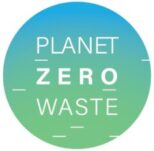Did you know that the average person produces 540kg of household waste per year in Australia? It’s estimated that in 2017, Australians generated 67 million tons of waste. That’s a lot of garbage!
In the United States, California tracked their school and university waste. These institutions generated around 562,442 tons of waste. Nearly half of this waste comes from organic materials. These include paper, cardboard, and uneaten cafeteria food. Many of these materials are recyclable.
What if we all do our part to reduce that number? One way to reduce your waste production is to start a Zero Waste School Program. Zero waste programs are designed to help schools eliminate waste and promote recycling and composting.
Zero waste principles are simple: reduce, reuse, recycle and rethink. But implementing a Zero Waste program in your school can seem like a daunting task. Luckily, there are many ways to make the transition to Zero Waste easier. Here are a few tips on how to start a Zero Waste School Program:
- Encourage Zero Waste Supplies
- Education
- Better Trash Management
